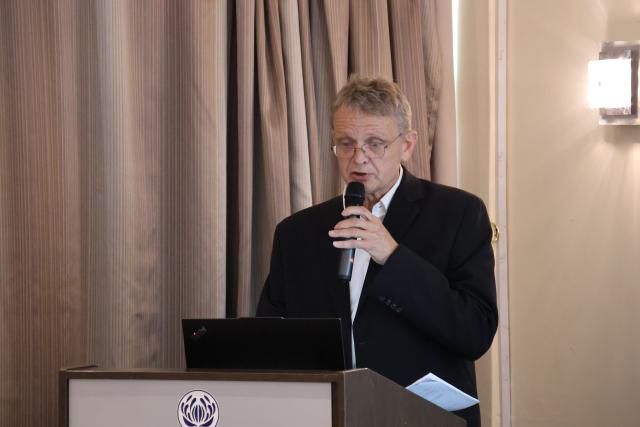
WINDHOEK, 06 June 2025 - Managing Director of Ohorongo Cement, Hans-Wilhelm Schutte (Photo by: Andreas Thomas) NAMPA

WINDHOEK, 06 June 2025 - Namibian Competition Commission CEO Vitalis Ndalikokule. (Photo by: Andreas Thomas) NAMPA

WINDHOEK, 06 June 2025 - The One Economy Foundation received a donation of sanitary pads from Lil-Lets and Premier FMCG at the #BeFree Youth Campus in Windhoek. (Photo by: Justina Shuumbwa) NAMPA

OSHAKATI, 06 June 2025 - Oshakati Mayor Leonard Hango during the tabling of the budget on Friday. (Photo by: Maria David) NAMPA

WINDHOEK, 26 May 2025 - Sinomine Communications Manager, Alina Garises. (Photo: Contributed)

NKURENKURU, 04 June 2025 - The Nkurenkuru Expo Hall in the Kavango West Region. (Photo by: Lylie Joel) NAMPA

NKURENKURU, 04 June 2025 - The Nkurenkuru Expo Hall in the Kavango West Region. (Photo by: Lylie Joel) NAMPA
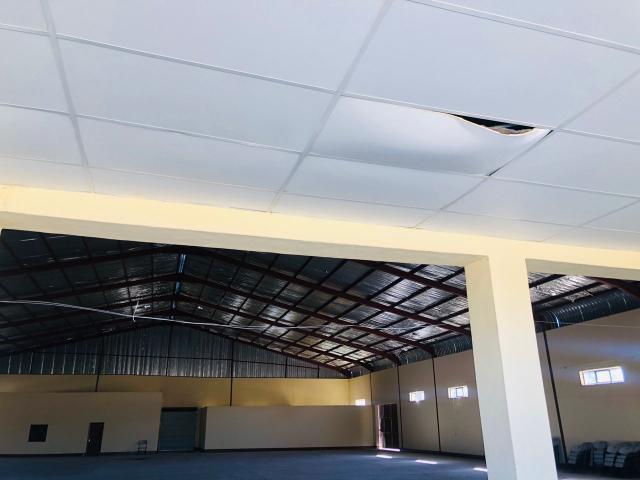
NKURENKURU, 04 June 2025 - The Nkurenkuru Expo Hall in the Kavango West Region. (Photo by: Lylie Joel) NAMPA

FILED - 27 May 2025, Saxony, Leipzig: Nina Warken, German Minister of Health, speaks at the opening of the 129th German Medical Assembly in the Nikolairche. Photo: Jan Woitas/dpa

(250607) -- HAIKOU, June 7, 2025 (Xinhua) -- This photo taken on May 27, 2025 shows a scene of the marine ranch in the waters off Wuzhizhou Island in Sanya, south China's Hainan Province. Around 2010, the Wuzhizhou Island in Sanya, a city renowned for its tropical climate and one of the most popular tourist destinations in China, began building China's first tropical marine ranch to restore the underwater ecology damaged by typhoons and fishing activities. The waters surrounding the island contain numerous species such as sea cucumbers, sea urchins, and tropical fish. Marine ranching involves placing artificial reefs, including cement frames and old iron boats, at fixed sites under seawater, which can attract fish, shrimps, crabs, shellfish and other marine life to forage, rest and reproduce. A coral restoration program was launched here in 2016. Since its launch, the marine ranch has transplanted more than 40,000 corals. The coral restoration program has transformed Wuzhizhou, a popular diving destination, into a model of sustainable marine tourism where ecological improvement and tourism coexist harmoniously. (Xinhua/Zhang Liyun)

(250607) -- HAIKOU, June 7, 2025 (Xinhua) -- This photo taken on May 27, 2025 shows a scene of the marine ranch in the waters off Wuzhizhou Island in Sanya, south China's Hainan Province. Around 2010, the Wuzhizhou Island in Sanya, a city renowned for its tropical climate and one of the most popular tourist destinations in China, began building China's first tropical marine ranch to restore the underwater ecology damaged by typhoons and fishing activities. The waters surrounding the island contain numerous species such as sea cucumbers, sea urchins, and tropical fish. Marine ranching involves placing artificial reefs, including cement frames and old iron boats, at fixed sites under seawater, which can attract fish, shrimps, crabs, shellfish and other marine life to forage, rest and reproduce. A coral restoration program was launched here in 2016. Since its launch, the marine ranch has transplanted more than 40,000 corals. The coral restoration program has transformed Wuzhizhou, a popular diving destination, into a model of sustainable marine tourism where ecological improvement and tourism coexist harmoniously. (Xinhua/Zhang Liyun)
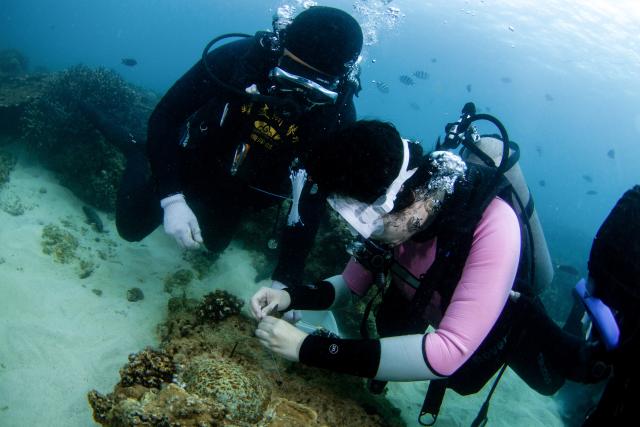
(250607) -- HAIKOU, June 7, 2025 (Xinhua) -- A journalist (R) tries to plant corals at the marine ranch of Wuzhizhou Island in Sanya, south China's Hainan Province, May 27, 2025. Around 2010, the Wuzhizhou Island in Sanya, a city renowned for its tropical climate and one of the most popular tourist destinations in China, began building China's first tropical marine ranch to restore the underwater ecology damaged by typhoons and fishing activities. The waters surrounding the island contain numerous species such as sea cucumbers, sea urchins, and tropical fish. Marine ranching involves placing artificial reefs, including cement frames and old iron boats, at fixed sites under seawater, which can attract fish, shrimps, crabs, shellfish and other marine life to forage, rest and reproduce. A coral restoration program was launched here in 2016. Since its launch, the marine ranch has transplanted more than 40,000 corals. The coral restoration program has transformed Wuzhizhou, a popular diving destination, into a model of sustainable marine tourism where ecological improvement and tourism coexist harmoniously. (Xinhua/Zhang Liyun)

(250607) -- HAIKOU, June 7, 2025 (Xinhua) -- This photo taken on May 27, 2025 shows a scene of the marine ranch in the waters off Wuzhizhou Island in Sanya, south China's Hainan Province. Around 2010, the Wuzhizhou Island in Sanya, a city renowned for its tropical climate and one of the most popular tourist destinations in China, began building China's first tropical marine ranch to restore the underwater ecology damaged by typhoons and fishing activities. The waters surrounding the island contain numerous species such as sea cucumbers, sea urchins, and tropical fish. Marine ranching involves placing artificial reefs, including cement frames and old iron boats, at fixed sites under seawater, which can attract fish, shrimps, crabs, shellfish and other marine life to forage, rest and reproduce. A coral restoration program was launched here in 2016. Since its launch, the marine ranch has transplanted more than 40,000 corals. The coral restoration program has transformed Wuzhizhou, a popular diving destination, into a model of sustainable marine tourism where ecological improvement and tourism coexist harmoniously. (Xinhua/Zhang Liyun)
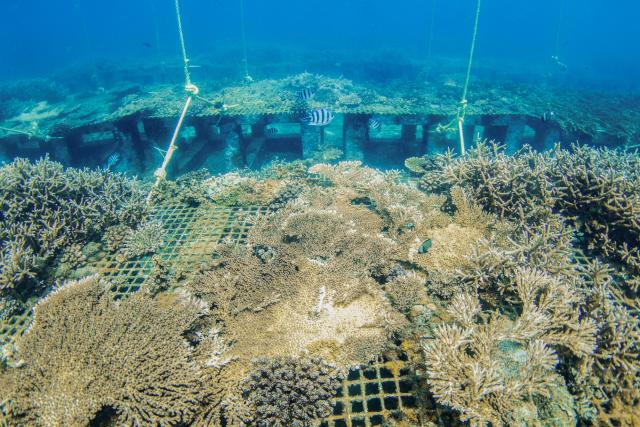
(250607) -- HAIKOU, June 7, 2025 (Xinhua) -- This photo taken on May 26, 2025 shows a scene of the marine ranch in the waters off Wuzhizhou Island in Sanya, south China's Hainan Province. Around 2010, the Wuzhizhou Island in Sanya, a city renowned for its tropical climate and one of the most popular tourist destinations in China, began building China's first tropical marine ranch to restore the underwater ecology damaged by typhoons and fishing activities. The waters surrounding the island contain numerous species such as sea cucumbers, sea urchins, and tropical fish. Marine ranching involves placing artificial reefs, including cement frames and old iron boats, at fixed sites under seawater, which can attract fish, shrimps, crabs, shellfish and other marine life to forage, rest and reproduce. A coral restoration program was launched here in 2016. Since its launch, the marine ranch has transplanted more than 40,000 corals. The coral restoration program has transformed Wuzhizhou, a popular diving destination, into a model of sustainable marine tourism where ecological improvement and tourism coexist harmoniously. (Xinhua/Zhang Liyun)
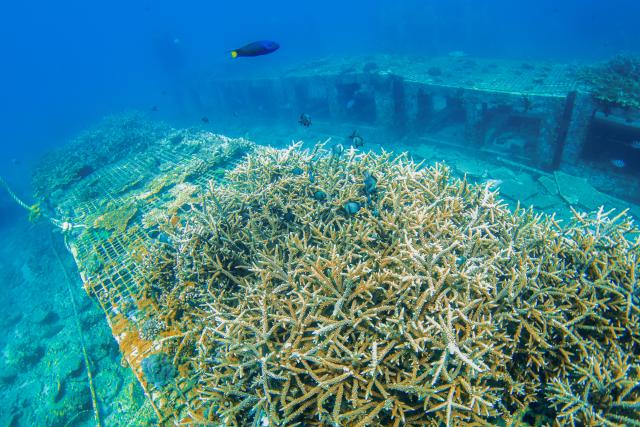
(250607) -- HAIKOU, June 7, 2025 (Xinhua) -- This photo taken on May 26, 2025 shows a scene of the marine ranch in the waters off Wuzhizhou Island in Sanya, south China's Hainan Province. Around 2010, the Wuzhizhou Island in Sanya, a city renowned for its tropical climate and one of the most popular tourist destinations in China, began building China's first tropical marine ranch to restore the underwater ecology damaged by typhoons and fishing activities. The waters surrounding the island contain numerous species such as sea cucumbers, sea urchins, and tropical fish. Marine ranching involves placing artificial reefs, including cement frames and old iron boats, at fixed sites under seawater, which can attract fish, shrimps, crabs, shellfish and other marine life to forage, rest and reproduce. A coral restoration program was launched here in 2016. Since its launch, the marine ranch has transplanted more than 40,000 corals. The coral restoration program has transformed Wuzhizhou, a popular diving destination, into a model of sustainable marine tourism where ecological improvement and tourism coexist harmoniously. (Xinhua/Zhang Liyun)
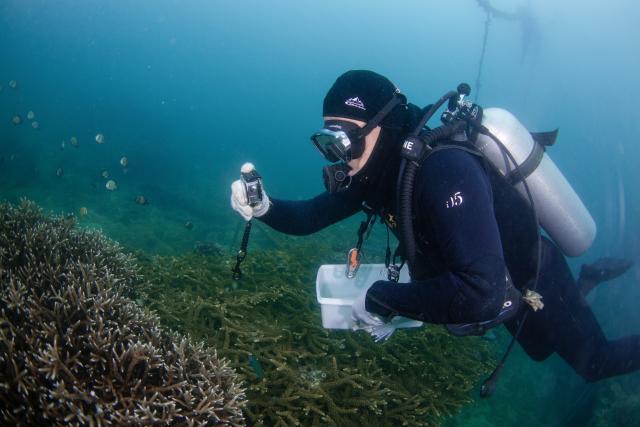
(250607) -- HAIKOU, June 7, 2025 (Xinhua) -- A staff member takes photos of planted corals at the marine ranch of Wuzhizhou Island in Sanya, south China's Hainan Province, May 27, 2025. Around 2010, the Wuzhizhou Island in Sanya, a city renowned for its tropical climate and one of the most popular tourist destinations in China, began building China's first tropical marine ranch to restore the underwater ecology damaged by typhoons and fishing activities. The waters surrounding the island contain numerous species such as sea cucumbers, sea urchins, and tropical fish. Marine ranching involves placing artificial reefs, including cement frames and old iron boats, at fixed sites under seawater, which can attract fish, shrimps, crabs, shellfish and other marine life to forage, rest and reproduce. A coral restoration program was launched here in 2016. Since its launch, the marine ranch has transplanted more than 40,000 corals. The coral restoration program has transformed Wuzhizhou, a popular diving destination, into a model of sustainable marine tourism where ecological improvement and tourism coexist harmoniously. (Xinhua/Zhang Liyun)